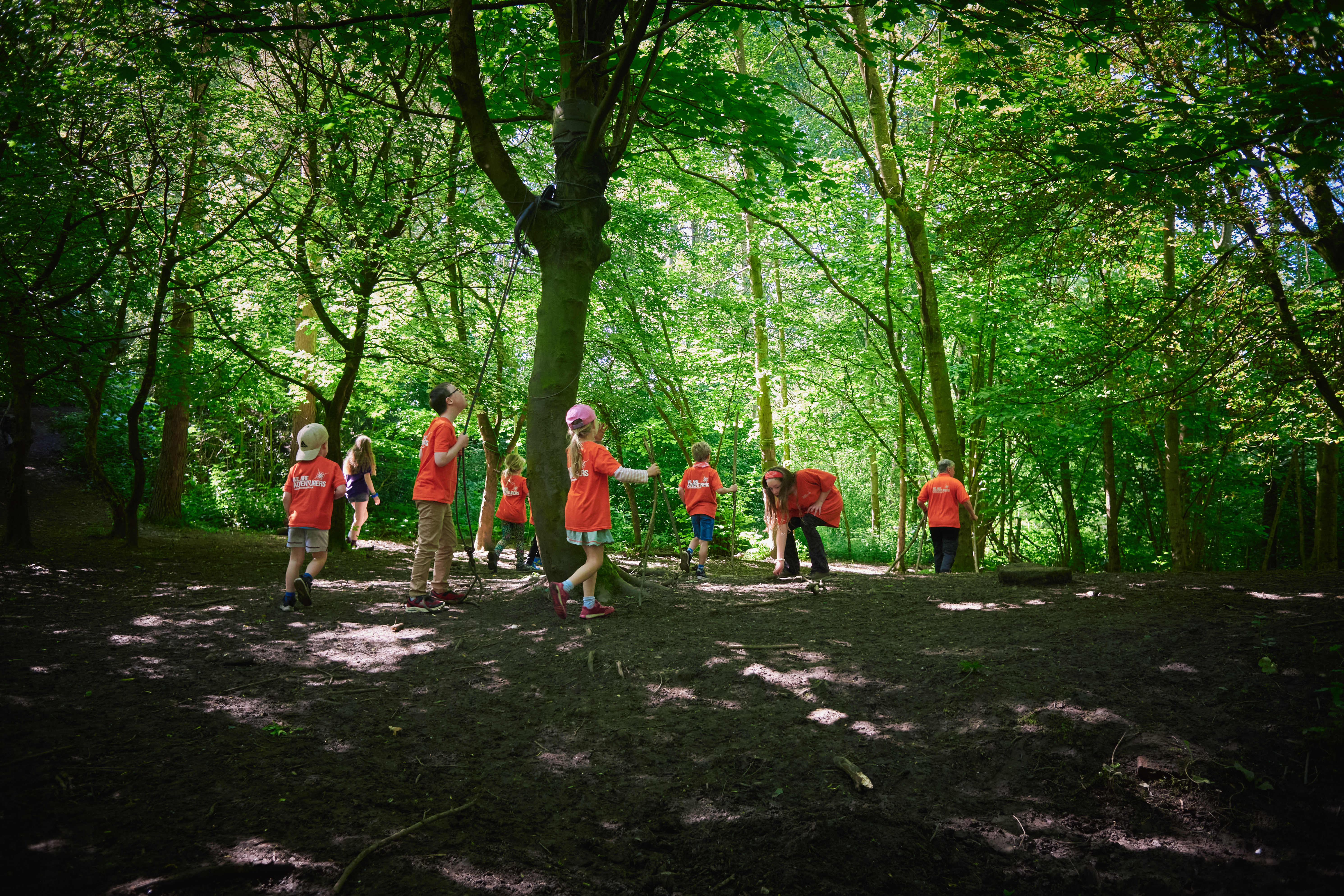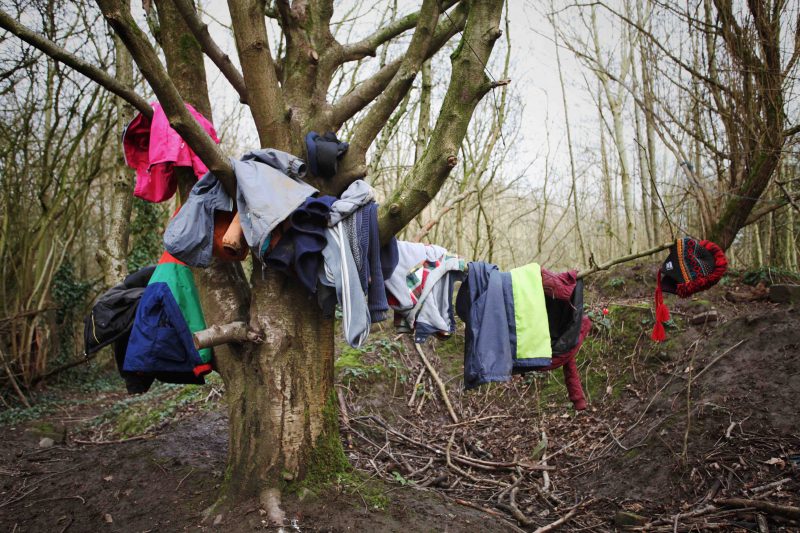
What to talk about, how to keep them interested and how to encourage birds into your garden: Tips for how to get the most out of the RSPB Big Garden Birdwatch from the team at We Are Adventurers
This week the team will be heading into schools to help KS1 and KS2 children take part in the RSPB Big Garden Birdwatch. This is the world’s largest wildlife survey of its kind and everyone who takes part is contributing to an important initiative.
We love it here at WAA, as it can be a great catalyst to encourage your class or your junior adventurers to connect with birds and trees and how they can make a difference to their ecosystem and the sense of togetherness and importance resonates with all ages.
Getting kids involved creates an early interest in nature and conservation. It’s an engaging, screen-free activity that encourages curiosity, observation skills, and a sense of responsibility towards the environment.
But some parents tell us that they can feel a little out of our depth when it comes to talking around the topic and that waiting for birds to turn up can be frustrating – so we thought we’d share some of the conversation starters that we use to connect with our junior adventurers to help you make the most of the moment.
GET THEM THINKING …
Obviously, you want to spot birds. But in order to encourage them into your space, you need to be quiet. This can be exciting if you encourage everyone to whisper and give them their own notebooks to keep track of the number of birds they see. Ask them to guess how many they’ll spot in the hour and make a note in their book.
Start to talk about why birds love gardens/woodland spaces. Birds are looking for the perfect combination of food, shelter, and space to nest.
Gardens offer much more than just open ground—they are a mini ecosystem, teeming with opportunities for birds to find food, build nests, and hide from predators.
Ask your little ones to watch/think about how the birds interact with the different spaces in your garden/park?
Make predictions about the areas of the garden/park/woodland that they will be most attracted to and why they think this is. Validate their opinions as birds arrive.
Key areas to talk about:
- Shelter and nesting
Birds love areas with trees and shrubs, as they provide shelter, nesting sites, and a place to hide from predators. Dense, low shrubs are especially useful for smaller birds, such as robins and sparrows, which like to hide out of sight. Tall trees, such as oaks, will attract larger birds like crows and woodpeckers, which are drawn to the branches for roosting and food. Additionally, trees that bear fruit or berries (such as rowan or holly) can attract birds looking for a quick meal. - Sources for food
Birds eat insects and berries and hedges and fences can offer both shelter from predators and a place to hunt for insects or berries. One of the easiest ways to encourage birds into your space is by providing food. - Water Sources
Birds need access to fresh water for drinking and bathing, especially in the winter months. Where can they get water from in your garden? The park? The woodland?
Ways to attract more birds into your garden
If not many/no birds arrive, this can feel very frustrating. But don’t forget to log your score – a zero count is just as important as any other.
Use this as a way to spark your junior adventurer’s imagination – and space allowing, may even be a follow-up outdoor project.
Bird feeders
Bird feeders can be placed in your garden or along a park walk, offering high-energy foods that attract different species. Fat balls, sunflower seeds, and peanuts are great for attracting a variety of birds, from tits to finches.
Create a wild section
Leaving an area of your garden to grow wildflowers or let your grass grow longer. These natural spaces not only attract insects for birds to eat, but they also provide cover for nest-building. Longer grass can also be home to small ground-feeding birds like robins, thrushes, and sparrows. The seeds from grasses and wildflowers are another source of food for finches and other seed-eating birds
Provide Nesting Boxes
Different birds prefer different types of nesting boxes, so research the types of birds in your area and install the right ones. Blue tits, great tits, and robins, for example, all use nesting boxes and these are easy enough to pick up from a DIY store or you can make your own.
Create a water source
A simple birdbath can provide much-needed hydration and cleanliness. To make your water source more attractive, place it in a quiet, sheltered spot where birds feel safe. You can even add a few pebbles or stones to shallow water to create a ‘stepping stone’ effect, making it easier for birds to access
Avoid Pesticides
Insects are a primary food source for many birds, and a chemical-free environment is better for the whole ecosystem. By avoiding pesticides and chemicals in your garden, you encourage a more diverse insect population.
How to identify the top 10 UK garden birds in January
Ideally, you’ll have a bird guide where you can look up the birds you spot. But if not, here’s a round up of the top 10 UK birds you’re most likely to see and how to easy recognise them so you can point these out.
1. House Sparrow
- Size: Small, about 14 cm in length.
- Male Features: Grey crown, black bib on its chest, and white cheeks.
- Female Features: Brown and grey with no black bib, often blending in with the surroundings.
House sparrows are one of the most common garden birds, often seen in flocks. The males are more brightly coloured than the females, making them easy to spot.
2. Blue Tit
- Size: Small, around 10 cm in length.
- Head: A striking blue cap and a yellow belly.
- White Cheeks: A distinct white cheek patch, often bordered with black.
Blue tits are agile little birds that are common in gardens, hopping from branch to branch. Their vibrant blue and yellow plumage makes them easy to identify.
3. European Robin
- Size: Small, about 13 cm in length.
- Red Breast: The most distinctive feature is the bright orange-red breast.
- Grey-Brown Back: The back and wings are grey-brown with subtle streaking.
The robin is a familiar sight in gardens throughout the year, often seen hopping along the ground in search of insects.
4. Blackbird
- Size: Medium, approximately 25 cm in length.
- Male Features: Glossy black feathers and a bright yellow-orange beak.
- Female Features: Brown feathers with darker wings and a less bright beak.
The male blackbird is easily recognised by its striking black plumage and yellow beak, while the female is more muted in colour, often blending into garden foliage.
5. Great Tit
- Size: Medium, about 14 cm in length.
- Head: Black head with a white cheek patch.
- Chest: Large, bold black stripe running down the centre of the chest, contrasting with its yellow belly.
Great tits are often seen in gardens, known for their distinctive black and yellow colouring. They are larger than blue tits and have a louder, more varied call.
6. Long-Tailed Tit
- Size: Small, around 10 cm in length.
- Tail: Long, narrow tail that is almost twice the length of its body.
- Pinkish Plumage: Soft pinkish and white feathers on the back and underparts.
These tiny, energetic birds are often seen flitting around in small flocks, darting through trees and bushes in search of insects.
7. Chaffinch
- Size: Medium, about 14 cm in length.
- Male Features: Bright orange-red breast with a blue-grey head and white wing bars.
- Female Features: Brown and grey with a more subtle colouration, but still a clear white wing bar.
Chaffinches are often spotted on the ground or on garden feeders, their bright colours making them a striking presence in winter gardens.
8. Starling
- Size: Medium, around 21 cm in length.
- Plumage: Iridescent black feathers with a speckled, star-like effect in winter.
- Yellow Beak: A sharp yellow beak that stands out against its dark feathers.
Starlings are commonly seen in large flocks (called murmuration) during winter, often congregating around feeders and birdbaths.
9. Wood Pigeon
- Size: Large, around 40 cm in length.
- Head: Large, round head with a white crescent shape on the neck.
- Body: Grey body with a white patch on the wings and a pinkish chest.
Wood pigeons are often seen perched in trees or feeding on the ground in gardens. Their size and distinctive markings make them easy to identify.
10. Goldfinch
- Size: Small, about 13 cm in length.
- Head: Red face with a black cap.
- Wings: Yellow and black wing bars that are highly visible in flight.
Goldfinches are stunning little birds, often spotted flitting around garden feeders. Their distinctive red face and colourful wings make them easy to identify, even from a distance.
How to get involved in the Big Garden Birdwatch
Ready to give it a go? Grab your binoculars, make a cup of tea, and join in the fun this weekend by observing and counting the birds that visit your space!
Taking part couldn’t be easier. Simply choose an hour between January 24-26, and count the birds you see in your garden, from your balcony, or at your local park.
Once you’ve finished your count, let the RSPB know what you saw. And remember, even if you see no birds at all, your empty count is just as important!
Working across Manchester, we want to enable children to explore the great outdoors, learn new skills, and increase their confidence through personal challenges.
Learn more:
- For more tips on how to get involved with the RSPB Big Garden Birdwatch, visit here.
- Want to learn more about outdoor adventures for children? Visit our website at We Are Adventurers.


